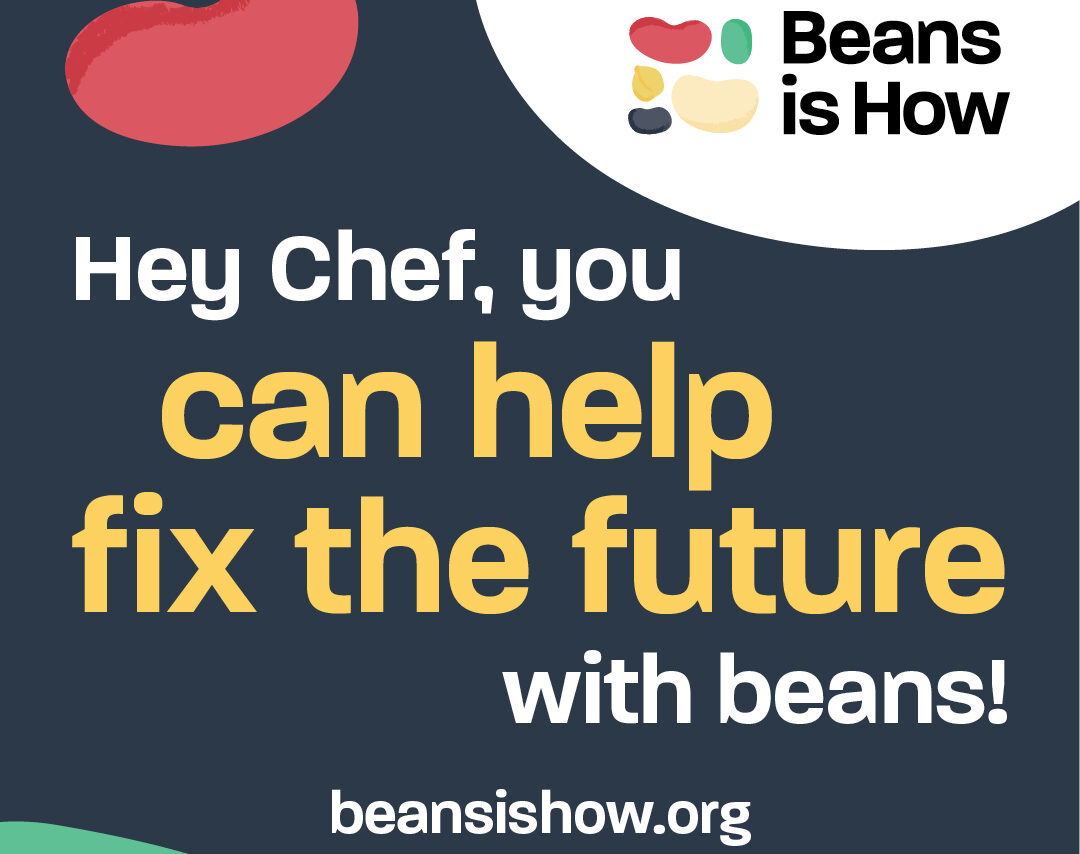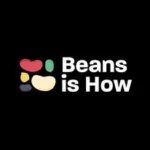On 3rd June at 3pm BST, the Beans is How Coalition hosted the virtual launch of #beansonthemenu UK with the Chefs’ Manifesto. An “ask me anything” designed for chefs and other food service professionals, it celebrated the nutritional, environmental and cost benefits of beans.
The event included a fireside chat between Professor Tim Spector, MD FRCP FRSB, (Professor of Genetic Epidemiology, King’s College London, UK & Scientific co-founder at ZOE) and Paul Newnham, (CEO, SDG2 Advocacy Hub) followed by a panel of experts moderated by Kristin Gutekunst (Campaign Director, Beans is How) featuring Amelia Christie-Miller (Founder & CEO Bold Bean Co), Chef Bettina Campolucci Bordi (Plant-based sustainable chef, consultant, and content creator; Founder Bettina’s Kitchen), Dr. Caspar Chater (Senior Research Leader in Crops and Global Change, Royal Botanic Gardens, Kew), Elphee Medici (Expert Nutrition and Sustainable Diets Consultant, Nutrition in Context) and Josiah Meldrum (Co-Founder & Director, Hodmedod).
Beans are good for our health
“The British desperately need more beans because we’re very unhealthy. We’re one of the sickest countries in Europe, both in children and adults… Beans are a perfect food we should be eating more of,” said Tim Spector in his opening remarks.
The British Government recommends that the British population eat at least 30 grams a day of fibre; yet, the average person in the UK has less than 20g with many others having less than 10g. A half a can of beans or 120g of cooked beans provides 7-8g, or almost a third of the daily recommended intake. Just by eating one serving of beans and other pulses, you can increase by 50% what the average person in the UK is eating in terms of their fibre content.
What makes some diets good for people and others bad for them is whether the foods are gut friendly or not. “In the last ten years, we’ve understood a lot more about the gut microbiome… taking the chemicals from the foods we eat and transforming them into chemicals that are key for our immune systems ”. Low fibre ultra-processed foods and increased meat consumption has reduced the diversity of fibre intake and created an imbalance in the gut microbes.
Epidemiology estimates suggest that if the majority of the UK population switched from the current poor diets to an optimum diet, they can reduce the list of common chronic diseases “So we now realising that diet is one of the most important things we can do to shift our health in the right direction” said Tim.
Elphee Medici emphasised that “one in six households are at risk of food insecurity”, and yet less than 1% of the population follows the current recommended intakes in the UK especially among the lower income groups who will not risk buying or cooking something that their children may not like because of taste.
Beans have different types of fibres and they are critical for a lot of diseases that cost the nations and the population in morbidity and ill health. These various fibres help with satiety and make people feel fuller for longer, which could potentially help with obesity.Globally, over a third of all deaths are due to heart disease and in the UK alone one person dies every eight minutes of heart disease, costing the NHS and the economy around 8 billion GBP a year.
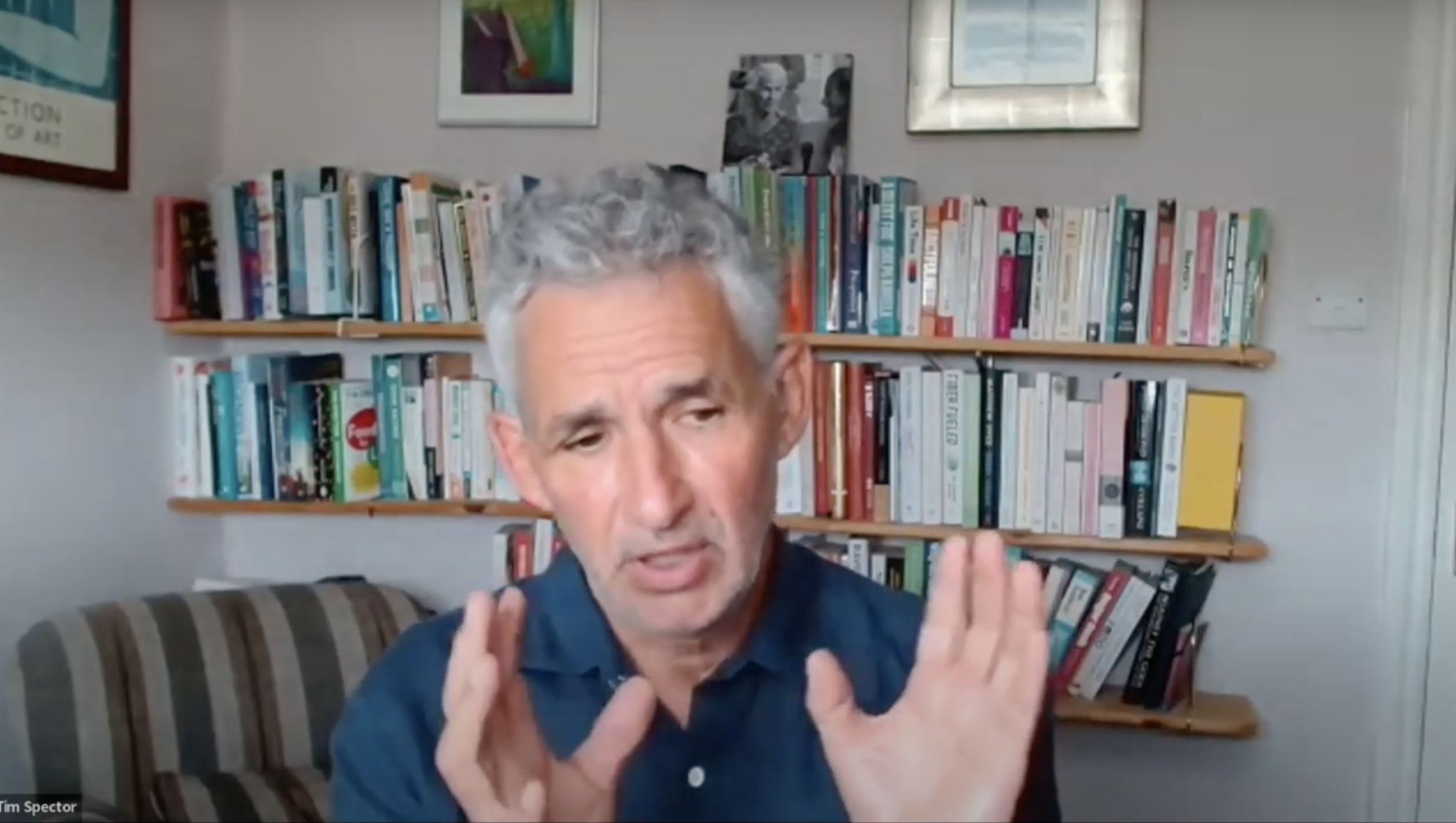
Beans are good for the planet
Josiah Meldrum set the stage by helping to explain the common terms beans, pulses and legumes. Pulses are the dry edible seed from the Fabaceae legume plant and include dried beans, chickpeas and lentils. Phaseolus vulgaris or common bean is the most frequently eaten and is used to make baked beans in the UK. Beans, soybeans and fresh peas and beans are not pulses or beans but are part of the broader legume family and are very important across global cuisines .
Dr. Caspar Chater highlighted the role beans play in sustainable agriculture, in soil health and in the future of climate change adaptation. “This is critical because most other plants can’t access that nitrogen from the air, and instead, we, as farmers, have to put it into our crops as manure or as artificial fertilisers”. While synthetic fertilisers are great for high nutrition crops, they come at a huge cost, both financially for the farmer, but also for the environment, for soil health and for exacerbating climate change through greenhouse gas emissions. Relying on the natural mechanisms of legumes can create great soil and great harvests without much damage and cost.
Although all legumes have nitrogen fixing abilities, their efficacy is dependent on the climate.
Part of Casper’s work is looking at what the effect of climate change has on the symbiotic process. When the plant has little water it cuts off this symbiotic relationship with the rhizobia.
Josiah added that we need to recognise and champion the genetic diversity of pulses and other plants, which is critical for food security and in resilient food and farm systems. Regarding the role of heritage and heirloom varieties of pulses in sustainable food systems, one of the varieties that is growing well in the UK’s climate is garden peas and fava beans (also called field beans or broad beans when eaten green), “and those two species fix almost all the nitrogen they need, they take a little bit that’s in the soil already and then they fix the rest. Other plants that are growing next to the pulses benefit from that extra nitrogen that’s being fixed”. Hodmedod’s is selling nine different types of pea alone that are all grown in the UK, each with their own taste.
Inspiring more bean consumption through taste and marketing
Hodmedod’s and Bold Bean have collaborated to bring one heirloom variety to market; the Carlin pea. Amelia Christie-Miller highlighted the difficulties of marketing underutilised crops due to lack of consumer awareness, sharing how when she started as a community project in 2008/2009, she was told that it would not be able to change people’s diets as no one wanted to eat beans and peas. It is hard work but they have influenced change.
Chef Bettina Campolucci Bordi talked about how beans have always been a big part of her life having had a multicultural upbringing. She has written three plant-based cookbooks and a lot of her recipes naturally contain beans and pulses. Since she became involved with Beans is How, her mission has been to spread the love of beans and to teach people how to use and include them in recipes that are not just down to hummuses but also in baking, in breads and spreads and adding beans and pulses into classic dishes like lasagnas, sausages and meatballs “They’re also fantastic for decreasing animal based recipes” she added.
She is one of the chef partners at Baxter Storey, a Beans is How Coalition partners with over 800 sites all over the UK and Europe. Since this year, #beansonthemenu has become part of BaxterStorey’s culinary approach as “an easy, amazing solution to be more environmentally friendly, to increase the health and wellbeing of people that are part of the business”.
Bettina added that chefs should taste lots of bean varieties by experimenting through cooking from scratch.
If not able to cook from scratch buy jarred beans such as from Bold Bean Co and then adapt them to various possibilities. “We sadly don’t have a huge tradition of cooking beans here in the UK, other than beans on toast, unlike countries like Spain and Italy and more mediterranean countries. Access to blogs and recipes can be a good starting point in learning”.
Chef Sohini, the founder of Smoke and Lime, shared a video message on how important it is for chefs to join the movement to put #beansonthemenu. She loves to surprise people by including beans alongside other ingredients in paratha, a Bengali dish, which surprises everyone with its flavour. “To get a different flavour… mash the beans with your hands with some green chillies, some onions and some mustard oil and some salt” and it can then be eaten alongside most staples.
Elphee Medici reiterated the importance of involving chefs in the campaign as taste always leads, while also considering the affordability messaging. Chefs should encourage traditional cuisines such as the asian or southern mediterranean cuisines. Traditional cooking that used to include a lot of beans needs to be reinvented and brought back to increase bean consumption. In the food environment, super markets should give bigger shelves to beans and make them more visible.
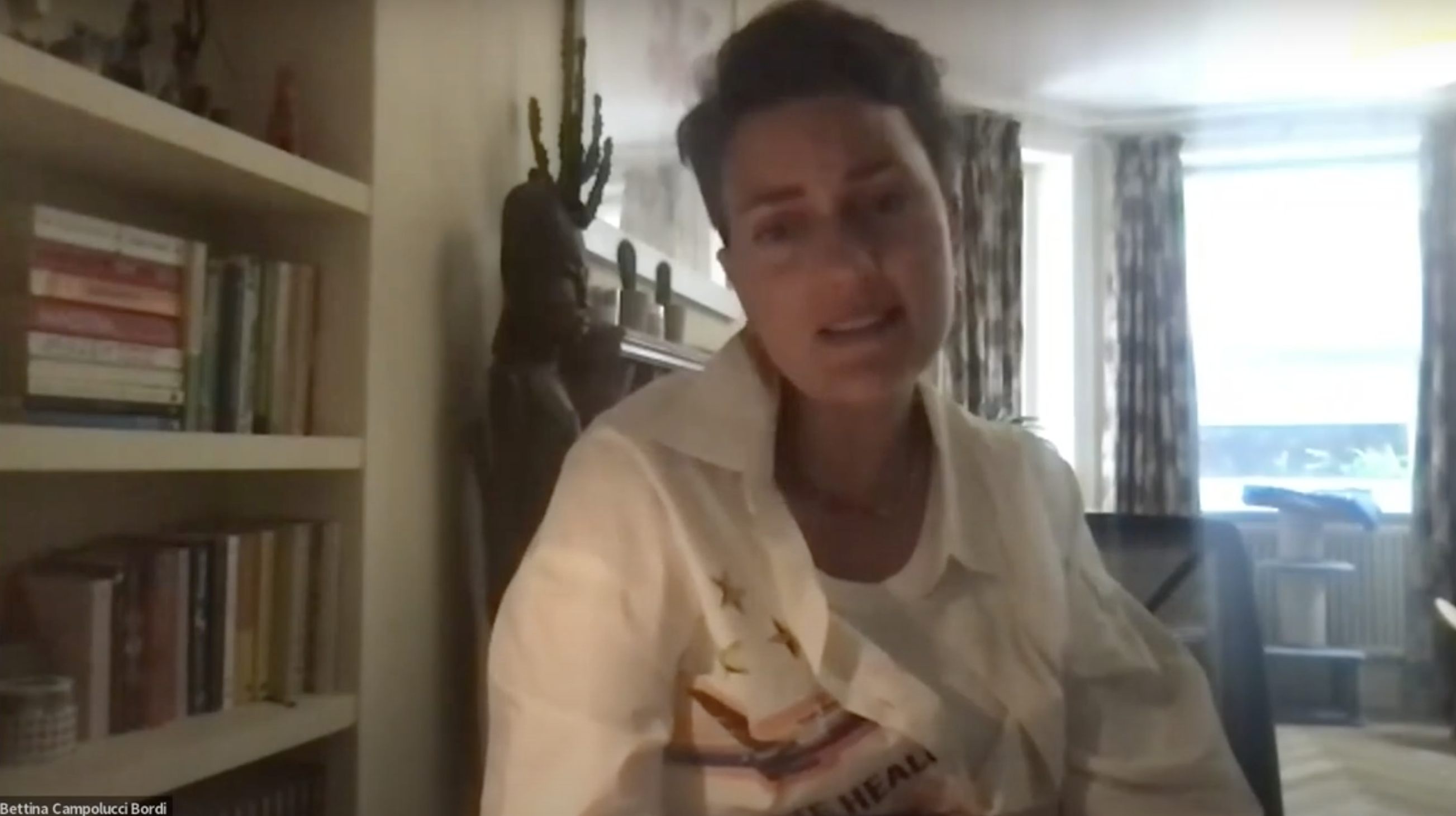
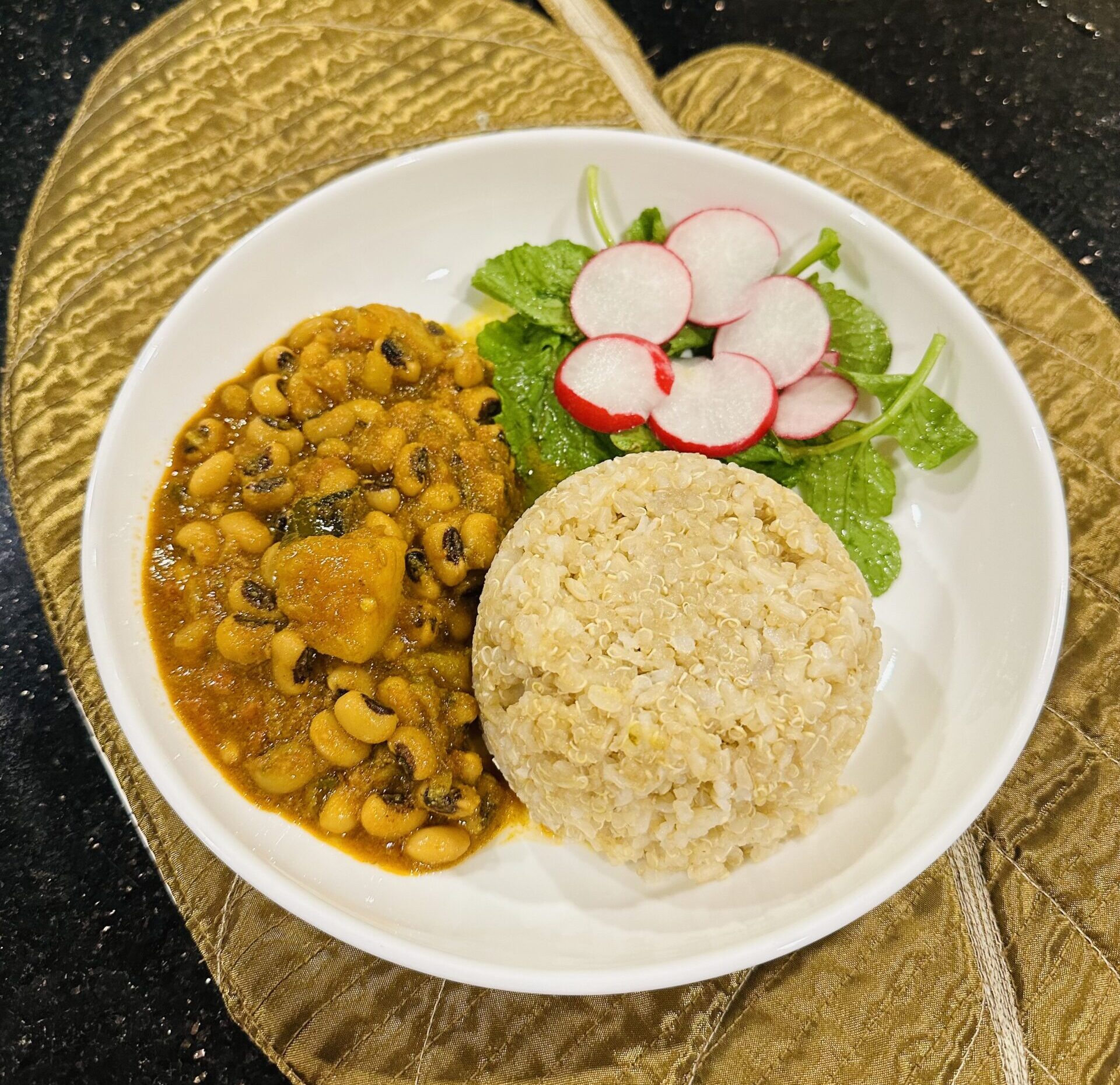
Advice for anyone looking to incorporate more beans in their diet:
Some creative tips for how the at home chef can start adding some more beans into their menus were shared by Tim, Amelia, and Bettina include:
-
Introducing beans slowly to allow your body to get used to beans, which can ease gastric discomfort.
-
Framing beans in the context of another food group, such as pasta or rice. For example bean-otto, which is a risotto knockoff, using beans is one of the most popular recipes on Bold Bean Co website.
-
Adding canned beans into a soup or a casserole or blending them into other dishes for those put off by the texture; for example, use a white bean and tofu blend instead of a traditional bechamel sauce – allowing you to get a whole layer of beans in a classic lasagna.
-
Combining pasta and a bean dish and gradually increasing the proportion of beans and reducing the proportion of the pasta.
-
Spicing up bean dishes by adding a bit of kimchi or sauerkraut to make it tasty.
Will you join us?
Professor Spector ended his remarks by commending initiatives such as Beans is How, which is making beans exciting, and desirable!
Joining #beansonthemenu is simple:
-
Visit beansonthemenu.com and follow @beansishow on Instagram and X. Make noise about the challenge using @beansishow #beansonthemenu.
-
Visit your local establishments to convince them to add beans, peas, lentils, and other pulses to the menu.
-
Support participating eateries – a list of those who have signed up on the website www.beansonthemenu.com.
-
Put beans on your own menus at home – great for your health, the health of the planet, and for your wallet.
-
If you’re a professional chef, join the challenge and champion the value of beans, sharing new recipes, videos of food preparation, and encouraging other chefs to join.
